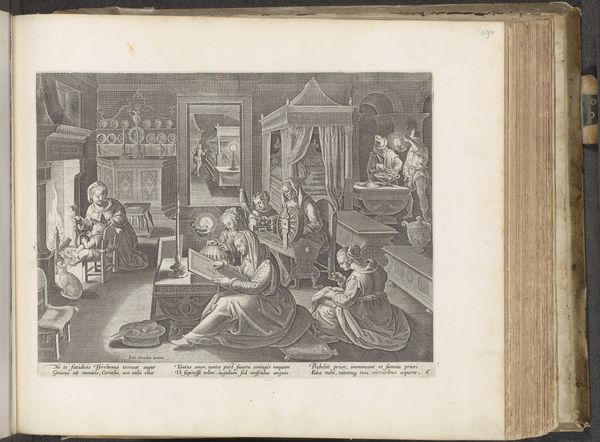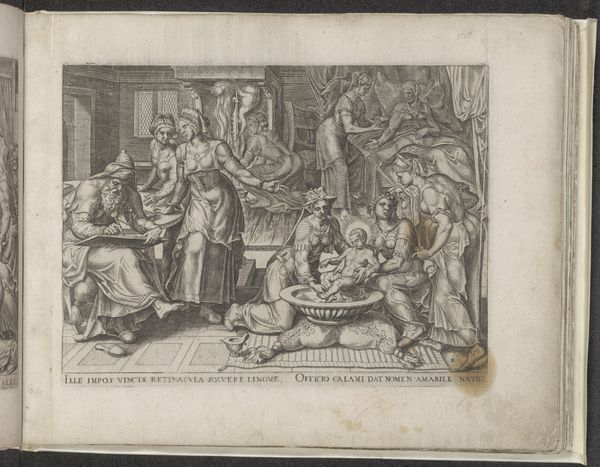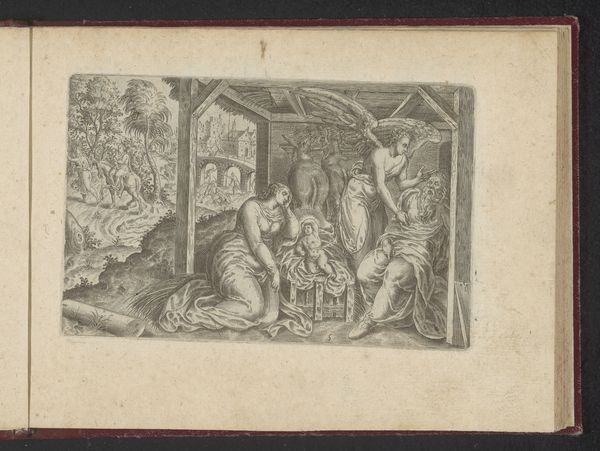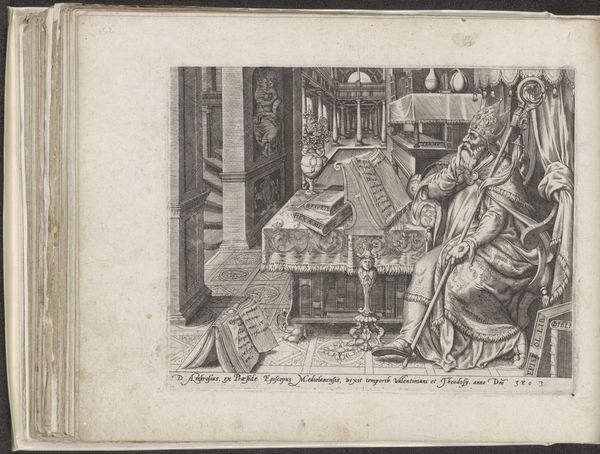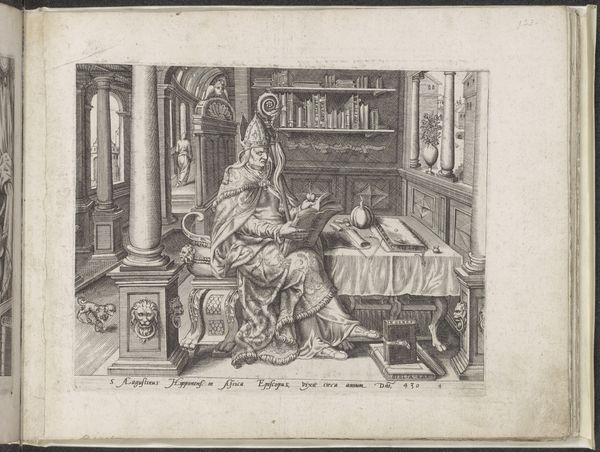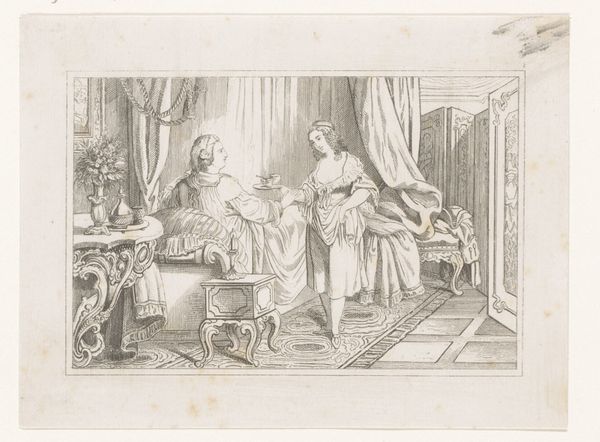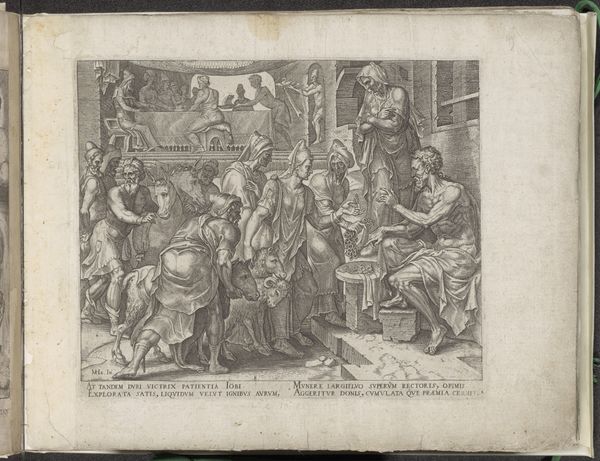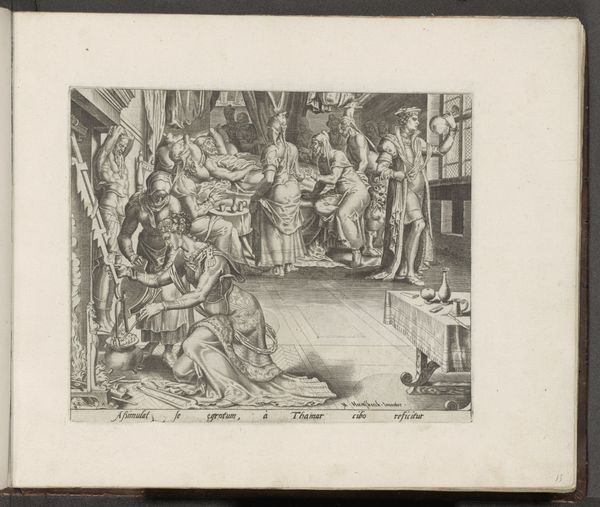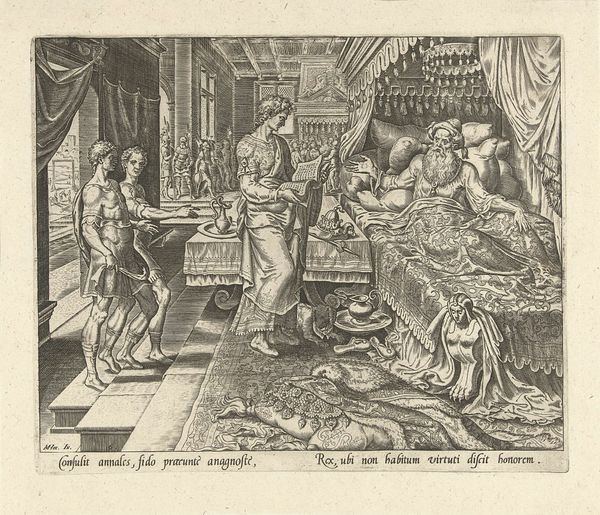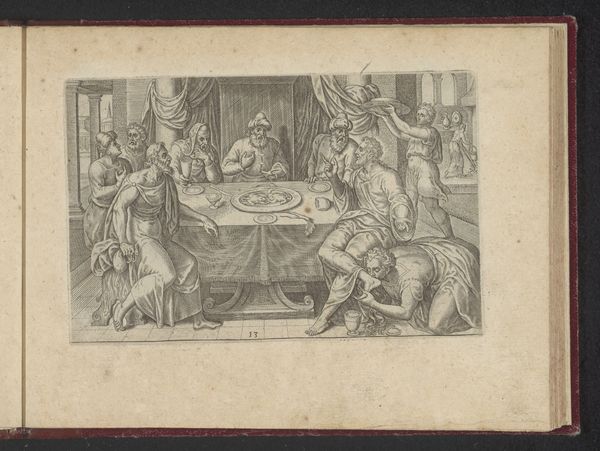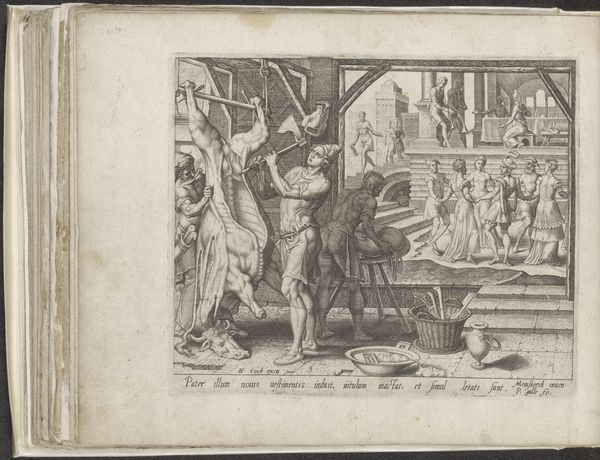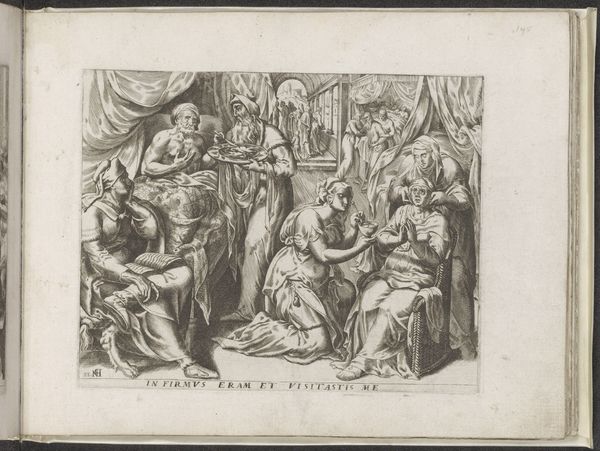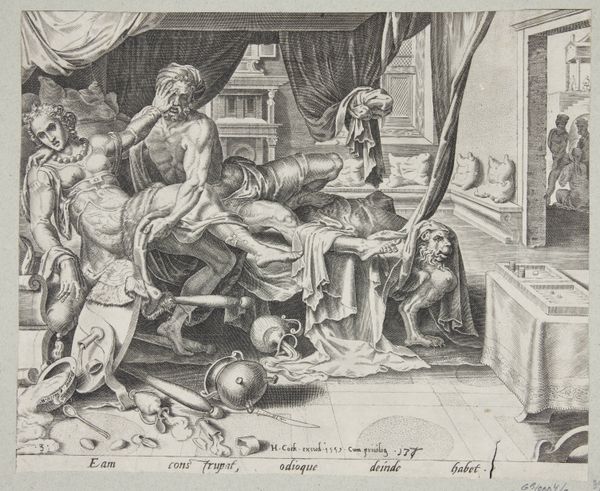
Dimensions: height 198 mm, width 252 mm
Copyright: Rijks Museum: Open Domain
Editor: Here we have Pieter Nagel’s engraving, "Kerkvader Hieronymus," made before 1571. The scene is incredibly detailed; a seated scholar surrounded by books and symbols. I find the presence of the lion somewhat unexpected. What do you make of this image? Curator: The lion, among other elements, anchors us to the figure of St. Jerome, a pivotal figure in the history of the church. Note how meticulously the image weaves together symbols of knowledge and mortality. The books, hourglass, and skulls all speak to the fleeting nature of earthly existence. The very act of writing signifies the transmission of cultural memory. Do you see how these elements work together? Editor: Yes, now that you mention it, the vanitas theme is quite prominent. I guess the lion is there to identify Jerome. But why include that particular animal? Curator: The lion is an attribute of Jerome’s hagiography – legend says he removed a thorn from its paw, and it became his loyal companion. More profoundly, consider the cultural symbolism of the lion itself: courage, strength, and wisdom, all qualities associated with the saint's scholarly pursuits and defense of faith. What does this tell us about the engraver's intended audience? Editor: It seems like this print serves to not only depict, but also to elevate St. Jerome as an exemplar of scholarly virtue and spiritual fortitude during a period of religious reform. I now have a much deeper understanding of how symbols contribute meaning! Curator: Exactly! By deciphering the symbolic language of images, we can understand what values resonated most with a culture at a particular moment in time.
Comments
No comments
Be the first to comment and join the conversation on the ultimate creative platform.
